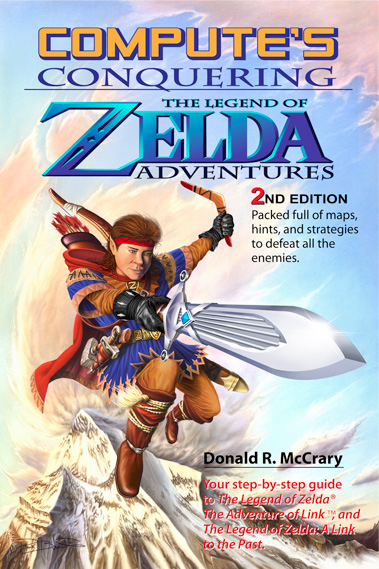
The cover art your neighbor’s nine-year-old created for your first book was adorable, but didn’t do much for sales. And you can’t draw worth a lick. Now you want to hire, well, not an expensive big-time pro, but an artist with a bit more experience. Never worked with a cover artist before? Or are you having trouble getting what you want when you hire an artist for your book? Good thing veteran commercial illustrator Paul Blumstein escaped from his studio long enough eat a few Pop-Tarts and talk about how to choose, negotiate, and generally work more effectively with your cover artist. In the interest of full disclosure—and because he’s threatened to hide the coffee if I don’t—I need to tell you that Paul is my husband. He has created cover art for Scholastic Publications, The Weekly Reader, and Simon & Schuster, among other clients.
Q: First, thanks for agreeing to an interview in the middle of NASCAR season. So how does an author start looking for an affordable, decent cover artist?
A: The great thing about the Internet is that it’s easier than ever to find creative talent. Check out a freelancer site like Elance.com, or go to LinkedIn, where a lot of artists display their portfolios. Do your homework. While not always the case, beginning artists tend to be more naïve about professional behavior than experienced ones. They might not take criticism as graciously or stick to deadlines as well as someone with more years and more projects under their belts. So have a conversation. Also check out their Facebook pages to see how they communicate. If they’re talking about how they get wasted all the time, or if they talk smack about their clients, that’s a big red flag.
Q: When do you talk money?
A: Right up front. This gives both of you a starting point. What you pay should include approval of rough ideas or sketches, finished art, a round or two of revisions, and the final, approved deliverable. (Note from Laurie: That means the final file. Even if you think you’ll just be doing an e-book, ask for a 300-dpi tiff or high-resolution jpg file at an average book-cover size (say, 6×9), in case you want to do a printed copy later.) If you can’t offer much money, consider other incentives. An inside credit, an inconspicuous cover signature, copies of your printed book and referrals might be appreciated by a beginning artist looking to build his or her portfolio and client list.
Q: Should you pay in advance?
A: ONLY pay a small amount to build goodwill between you and the artist, and ONLY after you’ve talked. If you’re paying under $500, offer half on approval of their rough ideas or sketches, and the rest on approval of final art. If you’re paying over $500, offer to pay one-third up front, one-third when you approve the rough sketch, and the final third upon delivery and approval of the finished art. If the artist insists on payment in full up front, be afraid. Be very afraid. This is not professional behavior.
Q: How specific do you need the author to be about the cover design?
A: It’s good to have a rough idea of what you want when you first talk to your artist. Tell him or her the genre, what the book is about, and maybe send a key scene. After you agree on things like the mood, the style, and the complexity of the design, you can get more specific. But leave the artist room for creativity. On the other hand, if you don’t know what you want, you could go into a frustrating endless loop.
Q: What if an author doesn’t like the final cover?
A: Look, it’s your money and your book. You should get what you want. BUT….if you’ve communicated well, have an agreement in writing, and find the relationship completely unworkable, that’s what a kill fee is for. That’s why you only pay the remaining amount on final approval and delivery of your art. Better to cut your losses than struggle with a cover that won’t turn out the way you want. If you’ve approved the art and paid, but decide to make alterations on your own, it’s good to let the artist know, as a courtesy.
Q: Anything else authors should know?
A: You’ve put a lot of effort into your manuscript, and it can be tempting to want your book cover art created immediately. Sure, you can get a cheap cover, but optimally, it can be better to save up some money for a more experienced, professional, and reliable artist who can help guide you through the creative process.
Finally, respect is important. Yes, we’re working for you, but we’re not making hamburgers, here. Great, functional art takes time. No artist wants to feel like you’re “settling” for his or her work. As well as money, we like praise and appreciation. We’re like puppies that way. Now can I go watch the race?
* * * * *
Laurie Boris is a Contributing Author for Indies Unlimited and author of the five-star novel, THE JOKE’S ON ME. Her second novel, DRAWING BREATH, has just been released. For more information, please see the IU Bio page and her website: http://laurieboris.com.



Good stuff on both sides of the Qs and the As. 🙂
Thanks, Ed! 😀
Fascinating, great advice, thank you.
I was so lucky. I got professional covers, using my ideas, and paid a pittance compared to some. Not only that, I paid only after I got the final version. And i am very happy with the result. I even have the draft copy for my next book. All it needs is to add the back cover blurb.
But this is the same as the advice for working with editors and reviewers – we need to be professional and reasonable at all times. Courtesy and respect are never misplaced. Thanks for the inside view.
Yvonne, that's fantastic! Your covers are great. And yes, absolutely, respect all around works best. It's not always easy, but taking a few deep breaths before reacting helps.
Thanks for the post. I have always given my cover artists a copy of the manuscript. I find that they can bring in more interesting images if they have the whole story in mind.
I used to create my own covers and now I have a great partnership with The Raynfall Agency. She has rebranded my covers and written much better blurbs and other ad copy than I ever could.
Thank you, PA. When Paul did a series of middle-grade mysteries, he was given a good chunk of the manuscript to work with, and he says that really helped him visualize the mood of the book, the writer's style, and what turned out to be some really cool art.
I'll check out your covers…
This was incredibly helpful, and timely!
Thank you for reading, Valerie!
Love it. Thanks for sharing, Laurie and Paul!
We're glad to help! Any time we can use our powers for good instead of evil… 😉
Nice. I wish I would have known this right out of the gate.
🙂
I can't afford $500 or even the $250 yet, but I find a lot of great talent on deviantart.com and often artists looking to make their reputation are happy to go with 5% of profits. It may not be much for a while, but it still get's their work out and it only takes one novel to break out for them to benefit from the publicity.
Good point, Jaq, and thanks for the tip!
Laurie — Does hubby have a website? Of course he does.
Hi, Michael. Yes, of course he does! http://www.paultopiadesign.com
Thanks!
This is such useful and practical advice. Thanks very much.
Thank you, and thanks for visiting, Martin! 🙂
Thanks for this really helpful interview. I am especially glad that you explained that "we're not making hamburgers here". If an Indie author decides to hire a designer or illustrator to create a cover, remembering that a little respect goes both ways towards a smooth and effective project. Getting a clear idea of just what your book's cover is supposed to do is also very important and it only happens through agreeable discussion.
Oh, absolutely, Richard. We hire vendors for their expertise. I know it's tough, especially at first, to relax and let them do their craft. But that's part of the conversation.
Thanks for the information. Although I take fairly good pictures and have learnt to create interesting covers through Power Point, I might some day look for something different that I can't create myself.
I blogged about the making of my cover and offered a few ideas. My readers provided wonderful suggestions and helped me create what I have. You might say my readers created their own cover for my book.
Thanks for the links to find freelance artists.
Thanks for reading, Diane. I'm curious: how do you do covers in Power Point?
I read on a blog about creating covers with Power Point, so I gave it a try. The blog didn't provide any details on how to do it, but since I could manipulate pictures in MS Word, I found it easy. I blogged about it here: http://dianetibert.com/2012/02/20/create-design-m…
The examples with the blog are fairly basic; I played around to see what I could do. That was in February. Since then, I've learnt to create better covers. If you visit my blog, the Shadows in the Stone cover (in the right margin) and the Visions and Mares short story cover, are both done in power point. I save them as single slides in JPG or PDF. I always keep the original in Power Point, so I can change it if I need to.
You can create any size you want. All the images (except the desert scene) are from my camera. It's easy to take a normal picture and turn it into something strange and wonderful. I also made a cover with a sketch I had done in colour pencil. Cropping out excess material and adding other images (or pieces of other images) to the cover is easy.
I make my banners, headers and buttons for my web pages using Power Point, too. It's a great tool, one worth exploring if you have an interest in creating your own material. You are only limited by the images you have. If I hired an illustrator to create an image for the front cover, I'd just want the image. This would give me the contol of font size, style and design.
I forgot. I have better examples of covers in this blog: http://dianetibert.com/2012/04/24/which-cover-wor…
In samples 01 and 03, I removed the original backgrounds and replaced them with something more suitable. I could have easily inserted an individual, a horse…whatever I wanted.
Diane I checked out the link. Most impressive.
Diane, you have a nice feel for type.
Fantastic info. Many thanks.
🙂 Thank you, Meeks!